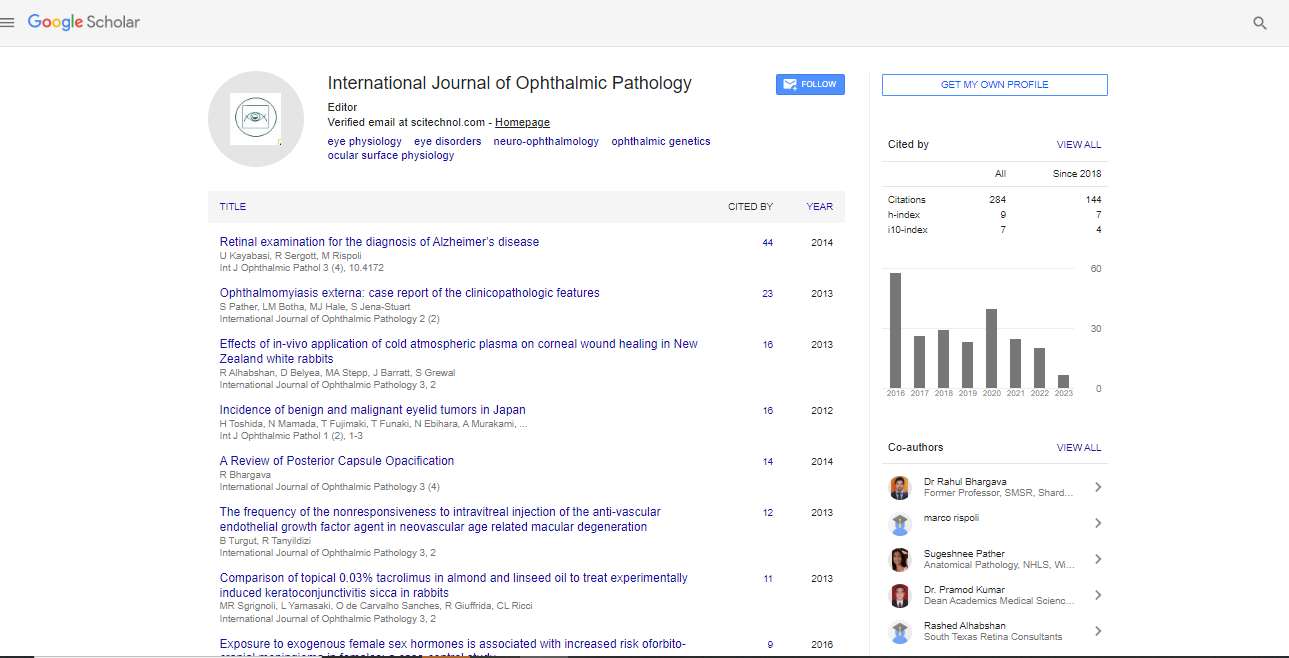Wernicke’s encephalopathy with ophtalmological revelation
Abdi Rhizlane
University hospital center mohammed VI oujda, Morocco
: Int J Ophthalmic Pathol
Abstract
Wernicke's encephalopathy is a rare but severe neurological syndrome, caused by thiamine deficiency (vitamin B1).Characterized by: mental confusion, ophthalmoplegia and ataxia. First described in 1881, wernicke’s encephalopathy continue to be unrecognized, often misunderstood disease. Through this clinical case we alert clinicians to the seriousness of this pathology, which in our case the revelation was ophthalmological. Clinical case: 50-year-old patient with no significant pathological history, who presented to the ophthalmological emergency room for decreased visual acuity with eye pain in ODG.The general examination finds a patient confused, disoriented in time and space with an unbalanced walk. The ophthalmological examination finds: Visual acuity corrected to 7 /10th in the right eye and 4/10th in left eye. Total Ophthalmoplegia in both eyes .Direct and consensual photomotor reflex was lazy. And bilateral stage I papillary edema We completed with a cerebro orbital CT who was normal. An MRI was requested that objectified a hyper signal of the thalamus in the flair and T2 sequence in the front of this clinical and radiological signs, we evoked about the diagnosis of gayette wernicke encephalitis and confirmed by the dosage of vitamin B1 which was lowered. She received injectable vitamin B1 treatment at the 400mg/d dose on diagnostic suspicion, followed by an oral relay (250 mg, twice daily). The evolution was favorable with improved consciousness at the end of the 5th day, regression of visual disturbances and resumption of walking. The 6-month-old test objectified a normal brain MRI.
Biography
Abdi Rhizlane is 31 years old, renowned ophthalmologist at University hospital center mohammed VI oujda morocco. She publishes many articles in reputed journals.
 Spanish
Spanish  Chinese
Chinese  Russian
Russian  German
German  French
French  Japanese
Japanese  Portuguese
Portuguese  Hindi
Hindi 